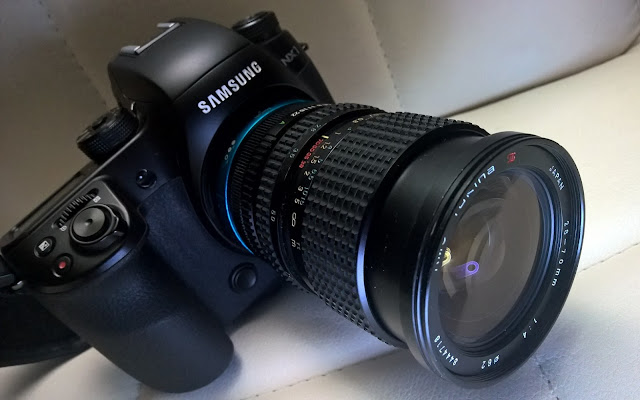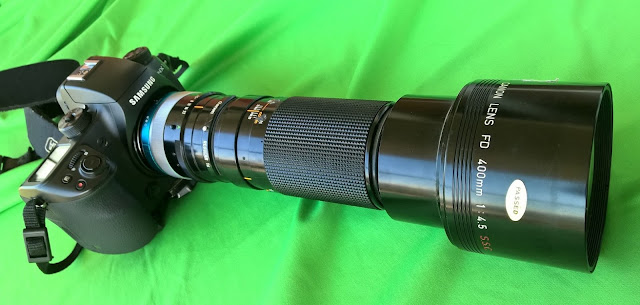I found this Promaster 200mm f3.3 prime lens at a pawn shop for $10 (300mm equivalent on the NX1). I was curious about a fast f3.3 lens at 200mm. Usually that focal length in vintage lenses you see f4 or greater.
This ProMaster has a built-in lens hood that slides forward, and a large focus ring surface at mid-barrel. F-stops go from f3.3 to f16. This particular lens had a Konica mount, adapted to the NX1.
The following photographs were taken downtown Phoenix, Arizona hand-held, manual-mode and manual focus. All photographs are 'as-taken' except where indicated. Light: late afternoon just before sunset.
f16 / 1/60-sec / ISO-100 / EV -0.3
(reduced brightness & added contrast)
Note appearance of some lens fungus at top-quarter of photograph. Not noticeable in other images.
f11 / 1/60-sec / ISO-100 / EV -0.3
(reduced brightness in post) f3.3 / 1/60-sec / ISO-100 / EV 0
(with lens wide open it was difficult to get the subjects in focus.
Focus-peaking on the NX1 didn't show any 'in-focus' points - so subjects are soft. Notice bokeh which provides a 'painterly-effect' in the background.)
f5.6 / 1/125-sec / ISO-100 / EV 0
f5.6 / 1/40-sec / ISO-100 / EV 0
(manipulated brightness & contrast in post)
f5.6 / 1/40-sec / ISO-100 / EV 0
(street cat appeared - tried to get focus right, but difficult
with moving subject; so I applied heavy contrast in post in
attempt to salvage the photograph by accentuating both subject
and background)
f5.6 / 1/40-sec / ISO-400 / EV +0.3
(manipulated brightness & contrast in post)
f11 / 1/40-sec / ISO-200 / EV +0.3
First Impressions: I need a few more outings with the Promaster 200mm f3.3 lens to get a better sense of whether it will be a keeper or not. I seemed to need extra time focusing at times even with the NX1's 'focus-peaking' capability. The one image I took at f3.3 came out soft. However some of the images at f5.6 or above look nice and sharp.
Lens Manufacturing Info: This lens is strikingly similar to a Hanimex label, this 200mm f/3.3 lens. The manufacturer, date and other 'branding' information is sparse. There is a discussion on the Internet at Photo.net here:























































